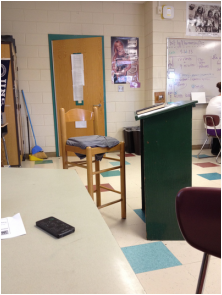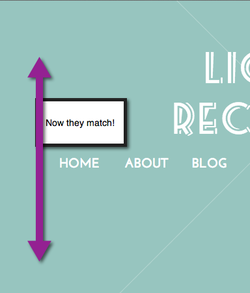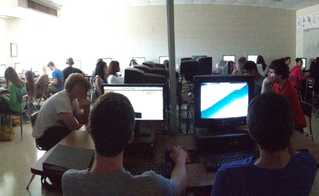 (via weebly.com)
(via weebly.com) Today in Desktop Publishing, I introduced the Photo Journal Project and added a twist: along with actually completing the project itself, the 27 students in the DTP class would have to design a website that could realistically house all of the projects from both their class and my 4th period-- a total of around 60. And since each student will ultimately turn in at least 17 photos and 17 write-ups of those photos--well, the math on that is going to get unwieldy kind of quickly.
The students divided up into groups of three or four--project teams--and were tasked with the following:
- Design a website layout that will archive the 60 projects
- Explain the design and functionality of the site--what goes where, and why you put it there
- Build the skeleton of the site, or draw it out, so others can understand your vision
- Do a screencap presentation via Camtasia on my computer, where you formally make a proposal of what you plan to do.
After they make these presentations, probably by the end of class Monday, I'm going to send the videos to Cheryl and her classes in California--letting them vote on which they like best and who had the most compelling presentation. After they make their recommendations, I'll decide who "wins the bid" and actually gets to build out the site for really real.
The only restriction I placed on them was that it had to be possible for them to do--if they proposed something, and they got chosen to build the Real Site, they had better be able to actually make their site do what they promised.
After they got over their initial shock, they settled in to work, and they worked hard. I walked around and asked/answered questions and did other "project manager" types of things, like making sure they remembered the site had to hold both photos and text. The discussions they were having were real web-design types of conversations: making recommendations; offering rationales for their decisions; researching new methods of actually creating through design the visions they saw in their minds.
I am stoked here for several reasons. The project gets to have a permanent online home. The people who build the site get to add a huge plus to their online portfolios and digital footprints-- I'll link to the finished site here in a few weeks and tweet it out. And I'm the most excited that all of the kids are getting to do real-world web design, taking a major project from a few notes on a piece of paper all the way to a massive finished site. I can't wait to see what they propose, and I can't wait to show you all what comes of it.





 RSS Feed
RSS Feed
